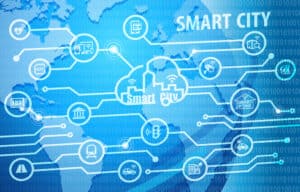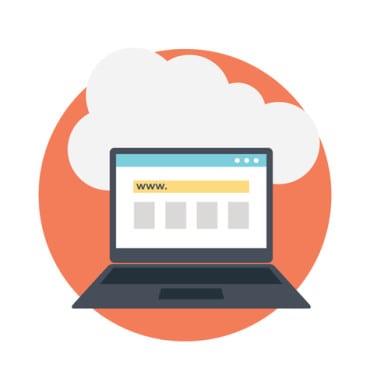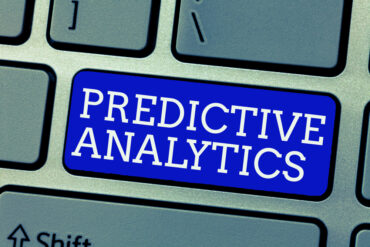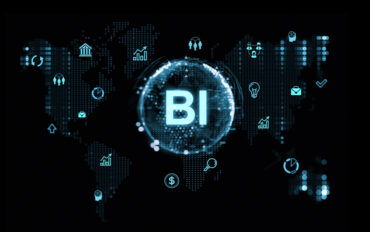
Urban IoT implementations require concerted effort from policymakers, industry leaders, and the public.
Cities are making strides in leveraging IoT technologies to enhance urban infrastructure. Through innovation, partnerships, and a focus on sustainability and equity, progress is happening in building smarter, more resilient cities. But cities aren’t companies, and their road to becoming “smart” doesn’t look the same as smart manufacturing or supply chain. Cities must navigate the complexity of IoT implementation in urban infrastructure, as, well, cities.
Navigating challenges and taking advice from business sectors where it fits
Implementing IoT in urban infrastructure and company operations shares similarities in the underlying technology, objectives, and challenges, yet there are distinct differences rooted in scale, purpose, stakeholders, and regulatory environments. Here’s a breakdown of how these processes are similar and different:
Similarities
- Technological Challenges: Both cities and companies face challenges in selecting, deploying, and integrating IoT technologies. Common concerns include interoperability, scalability, and ensuring the security of IoT devices and data.
- Data Management: The massive amounts of data generated by IoT devices pose similar challenges in terms of collection, analysis, storage, and privacy for both entities. Effective data management and analytics capabilities are crucial to deriving actionable insights.
- Investment and ROI: Both must carefully consider the costs of implementing IoT solutions, including hardware, software, maintenance, and training. They must justify these investments by demonstrating potential savings, efficiencies, or new revenue streams.
- Cybersecurity Risks: The increased connectivity inherent in IoT solutions elevates the risk of cyberattacks for cities and companies alike. Both must invest in robust security measures to protect their operations and sensitive data.
Differences
- Scope and Scale: Cities must consider implementing the Internet of Things on a much larger scale, impacting infrastructure systems like transportation, utilities, and public services that affect millions of people. On the other hand, companies typically focus on specific operational areas or processes that, while possibly extensive, don’t match the scale or complexity of a city’s infrastructure.
- Objectives and Impact: The primary aim of cities implementing IoT is to improve public services, safety, and quality of life for their residents. Companies usually focus on enhancing operational efficiency, reducing costs, and creating competitive advantages. The societal impact is a more significant consideration for cities.
- Stakeholders and Governance: Cities must navigate a complex landscape of stakeholders, including residents, businesses, and various government entities. Decision-making processes can be more cumbersome and are often subject to public scrutiny and regulatory constraints. Companies, while dealing with multiple stakeholders (e.g., customers, employees, shareholders), usually have more streamlined governance structures.
- Regulatory Environment: Cities are both implementers and regulators, often bound by stricter and more complex regulatory requirements than companies. They must ensure that IoT implementations comply with a wide range of privacy, data protection, and public safety regulations. Companies are also subject to regulations, but the scope is typically narrower and more focused on industry-specific regulations.
- Equity and Accessibility: For cities, there’s a critical emphasis on ensuring that IoT implementations do not exacerbate the digital divide and are accessible to all citizens, including those with disabilities. Companies may also consider accessibility, but their focus is more on their target market and customer base.
- Public-Private Partnerships (PPPs): Cities often rely on PPPs to implement IoT solutions due to financial constraints and the need for technological expertise. While companies may also engage in partnerships, the nature and purpose of these collaborations can differ, often driven by market expansion, innovation, or strategic goals rather than public service improvement.
While cities and companies share common technical and operational challenges in implementing IoT, the scope, objectives, and environmental contexts in which they operate introduce distinct considerations and complexities for cities.
See also: Government Security Agencies Publish Smart City Guidelines
The Digital Divide and Equity Concerns
One aspect of implementing IoT in urban infrastructure that people may not fully appreciate is the significant impact it has on social equity and inclusion. Here’s a closer look at this often-overlooked dimension:
- Exacerbating Inequalities: While IoT technologies promise to make cities smarter and more efficient, they also risk widening the gap between the digitally connected and those without access to technology. Smart city benefits, like optimized traffic flow, enhanced public safety, and improved energy efficiency, might primarily advantage those already digitally connected, leaving behind individuals without access to the internet or smart devices.
- Accessibility and Inclusivity: Implementing IoT solutions without considering the diverse needs of all city residents can inadvertently lead to solutions that are not accessible to everyone, such as the elderly, people with disabilities, or those not technologically savvy. Ensuring that IoT applications are universally designed and accessible is crucial for fostering inclusivity.
- Public Engagement and Transparency: There is often a lack of awareness and understanding among the general public about what IoT is and how it’s being used within urban infrastructure. This can lead to skepticism and resistance concerning data privacy and surveillance concerns. Proactively engaging with the community to explain the benefits, address concerns, and involve them in planning can help build trust and acceptance.
- Economic Implications: The economic impact of IoT implementation in cities, including potential job displacement and the creation of new types of jobs, is not always immediately apparent. It can create opportunities in tech, data analysis, and cybersecurity, but this requires a skilled workforce, highlighting the need for targeted education and training programs.
- Sustainability and Environmental Impact: The environmental implications of deploying thousands of IoT devices across urban areas, including energy consumption and electronic waste, are significant considerations. While IoT has the potential to make cities more energy-efficient and reduce carbon footprints, the sustainability of the devices themselves and the infrastructure needed to support them must be carefully managed.
Understanding and addressing these aspects are essential for creating smart cities that are not only efficient and technologically advanced but also inclusive, equitable, and sustainable. This underscores the importance of a holistic approach to IoT implementation that considers the socio-economic and environmental impacts alongside the technological and operational benefits.
Environmental Impact of IoT Devices
One critically under-discussed aspect of urban IoT implementation—at least in the public sphere—is the long-term sustainability and environmental impact of deploying extensive networks of IoT devices across cities. While discussions often focus on the immediate benefits of IoT (including, ironically, its ability to help the environment), the environmental concerns that researchers and scientists have about these technologies deserve more attention in the public space. Here’s why:
- Resource Consumption: The manufacturing, operation, and disposal of IoT devices consume significant resources, including rare earth metals and other materials whose extraction and processing can have detrimental environmental effects.
- Energy Use: IoT devices and the data centers that process their data require substantial energy. While some devices are designed to be energy-efficient, the sheer volume of connected devices can lead to a considerable increase in electricity demand, impacting the overall carbon footprint of urban areas.
- Electronic Waste (E-waste): The lifecycle of IoT devices can be relatively short, leading to significant amounts of electronic waste. Proper disposal and recycling of these devices pose a significant challenge, as e-waste can contain hazardous materials harmful to the environment and human health.
- Potential for Indirect Environmental Benefits: On the positive side, IoT technologies can play a pivotal role in monitoring and managing environmental conditions, reducing energy consumption in buildings, optimizing waste collection, and enhancing the efficiency of water and energy distribution. However, leveraging the Internet of Things for these purposes requires deliberate planning and implementation to ensure that the environmental benefits outweigh the costs.
Need for Sustainable Practices
- Design for Sustainability: There is a growing need to design IoT devices with sustainability in mind, focusing on energy efficiency, longer lifespans, and easier recyclability. This includes selecting materials that are less harmful to the environment and designing products that can be easily upgraded or repurposed.
- Lifecycle Management: Implementing comprehensive lifecycle management for IoT devices, from production to disposal, can mitigate environmental impacts. This includes programs for refurbishing, recycling, or safely disposing of devices at the end of their useful life.
- Renewable Energy: Powering IoT infrastructure with renewable energy sources can significantly reduce the carbon footprint of urban IoT systems. Encouraging or mandating clean energy for data centers and network infrastructure is vital.
- Public Awareness and Engagement: Raising public awareness about the environmental impact of IoT technologies can drive demand for more sustainable products and practices. Engaging citizens in sustainability initiatives can also foster a culture of environmental responsibility.
Approaching IoT with a long-term vision
Addressing the environmental sustainability of urban IoT implementation requires concerted effort from policymakers, industry leaders, and the public. By integrating sustainability into the core of IoT initiatives, cities can harness the benefits of these technologies in a way that supports long-term environmental goals.
- Strategic Planning and Vision: How do cities develop a strategic vision for IoT integration?
- Partnerships and Collaboration: What role do public-private partnerships play in facilitating IoT implementation?
- Regulatory and Policy Framework: How are legal and regulatory frameworks adapting to accommodate IoT innovations in urban areas?
- Community Engagement and Social Implications: How are cities engaging with communities to ensure the Internet of Things implementations meet the needs and concerns of all citizens?
- Technical Infrastructure and Capacity Building: What foundational technical infrastructure is required for IoT implementation, and how are cities building the necessary expertise?
- Evaluation and Metrics: How do cities measure the success and impact of IoT implementations?
- Learning from Failures: What lessons have cities learned from less successful IoT projects?
- Integration with Existing and Future Technologies: How are IoT initiatives integrated with other smart city technologies and plans for future technological advancements?
Addressing questions like these can help cities implement IoT despite challenges. As smart cities grow and citizens become more aware of the ways technology can improve their lives, cities will need to come to terms with precisely what it takes to implement the Internet of Things and do it well.































